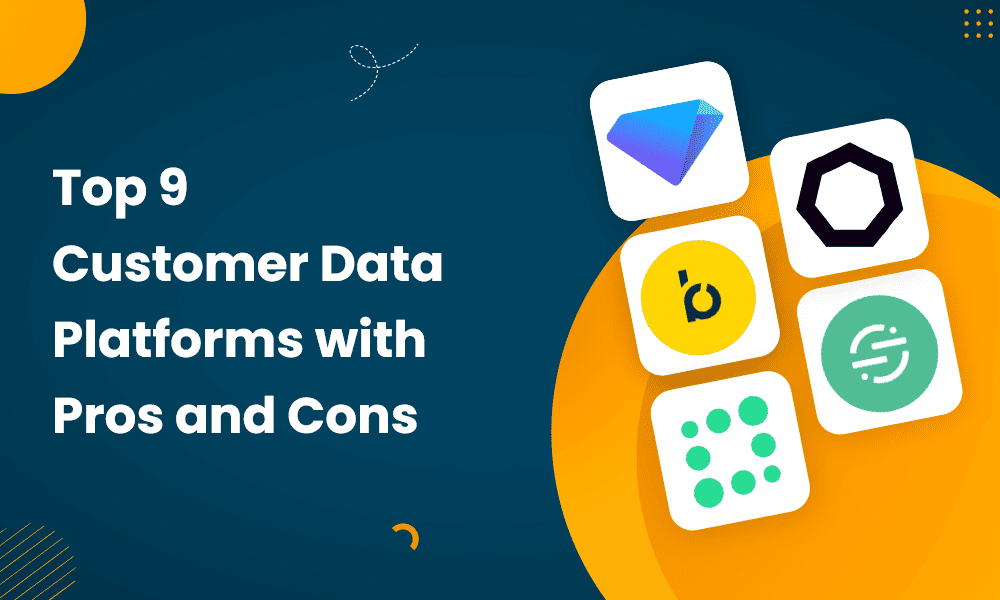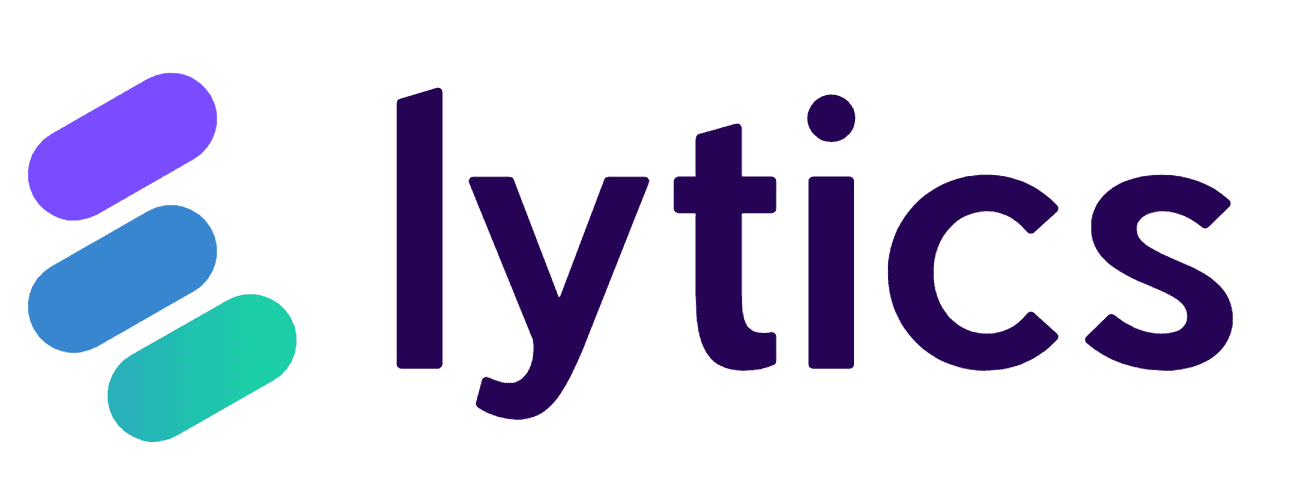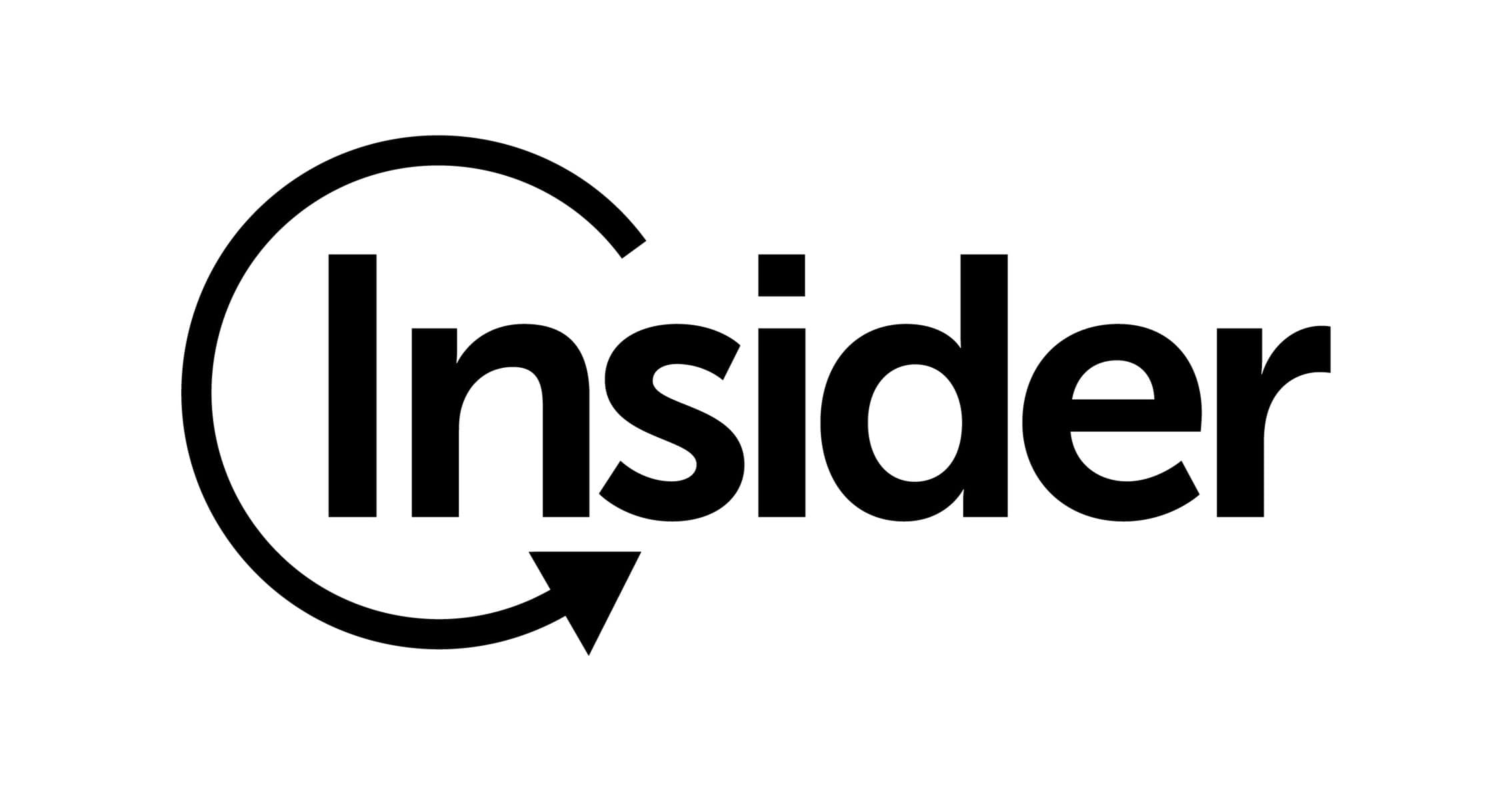Customer data platforms are specialized systems that gather customer information from multiple sources and consolidate it into a central access point. It then connects with other systems and tools to make the data available for storage, processing, and analysis.
Generally, CDPs support a wide range of functionalities to ensure proper customer data management. Several tools with varying capabilities can help you collect customer information from multiple data sources and organize them in a centralized location for easy access.
In this article, I share nine great customer data platforms, including their unique features, pros, and cons. I also provide certain specifications you should look for before choosing your preferred platform. This will help you make the most of the tool to achieve your business goals and objectives.
Table of Contents
9 Great Customer Data Platforms
Here’s a list of the top nine customer data platforms:
- Segment
- Tealium AudienceStream CDP
- Treasure Data
- Bloomreach
- Optimove
- Totango
- Lytics
- Insider
- SAP Customer Data Platform
1. Segment
Segment is a leading customer data platform that gathers customer data from several sources (website, mobile app, servers, etc.) and distributes it to third-party applications such as analytics tools, webhooks, or a data warehouse. Acquired by Twilio in 2020, the platform has grown to help over 25,000 businesses collect, clean, and activate their data.
Segment supports unique functionalities for product, engineering, and marketing teams. It offers unified customer views to enhance personalization and help you target the right customer with timely messages. The platform is well-suited for small and mid-sized businesses across retail, healthcare, media, B2B, etc.
With Segment, you can ensure consistent and complete customer data across the customer journey. It also provides options to connect, load, and customize the information in your cloud data warehouse.
Integrations: Twilio Segment supports pre-built integrations with over 450 applications, including advertising and analytics tools, business intelligence systems, storage platforms, and marketing automation tools.
Pros
- Segment offers a free and trial plan
- It supports 450+ integrations
- It has an intuitive dashboard
- It provides a unified customer view
Cons
- It has a steep learning curve
- Customer service needs improvement
- The user interface is difficult to process
Pricing
- Free: $0/month
- Team: $120/month
- Business: Custom pricing
2. Tealium AudienceStream CDP
Tealium AudienceStream is an independent customer data platform that provides comprehensive and accurate customer profiles to help businesses extract actionable reports and insights into customer behavior. Founded in 2013, Tealium AudienceStream supports unique features tailored to mid-sized and enterprise organizations across automotive, healthcare, insurance, pharma, sports, etc.
Tealium AudienceStream CDP also collects real-time customer data from sources such as IoT, mobile applications, kiosks, etc., and connects your business technologies to provide a centralized, consistent view of your customers across all channels. This lets you set pre-defined triggers based on your customers’ actions or behavior across your brand.
Tealium AudienceStream CDP combines with other programs to enhance its machine-learning capabilities. It provides actionable insights that let you predict high and low-value customers, thus helping you optimize your campaigns to focus on your most profitable buyers.
Integrations: Tealium AudienceStream CDP supports over 1,300 integrations with systems such as Adobe, Salesforce, Zendesk, AWS, etc.
Pros
- The platform provides real-time data activation and advanced segmentation
- It enhances the accessibility of online and offline data
- It supports more advanced functionalities for unifying customer data
Cons
- The user interface needs improvement
- It has a steep learning curve
- It requires high-level technical knowledge
Pricing
Pricing info is not available on the website. Contact the sales team.
Read also: How To Perfect Your Customer Data Governance
3. Treasure Data
Treasure Data is an enterprise-level system that ensures robust data governance and uses centralized customer profiles to understand their preferences, interests, and positions in the buyer journey. The platform was founded in 2011 and supports major capabilities well-suited for enterprise organizations in retail, pharma, life sciences, financial services, media, etc.
Treasure Data helps marketing teams connect data points across complex customer journeys and enhance data sharing to provide a unified customer view that enhances personalization. It supports machine learning capabilities, thus allowing your teams to create successful strategies by providing real-time data to spot significant trends and patterns.
Treasure Data also gathers your customer data from multiple sources to help sales and service reps deliver timely updates to customers based on their behavior and interactions around your brand touchpoints. Since the customer information resides in a central access point, teams can easily clean, organize, and analyze the data to craft strategies for improving customer experiences.
Integrations: Treasure Data supports over 170 connectors to work with several tailored applications. It offers seamless integrations with extended platforms like Adobe, Dropbox, Google Ads, Google Analytics, Intercom, Oracle, etc.
Pros
- Customer service is responsive
- It effortlessly integrates with third-party systems
- Treasure Data has a simple user interface
Cons
- It has a steep learning curve
- It is not an affordable option for smaller businesses
- Data visualization and source connections need improvement
Pricing
Pricing info is not available on the website. Contact the sales team.
Read also: Master Customer Data: A Guide For Customer Insights
4. Bloomreach
Bloomreach is a simple customer data platform that unifies real-time customer and product data to help eCommerce businesses understand customer preferences and provide actionable strategies for optimizing shopping experiences. Founded in 2009, Bloomreach has grown to support more advanced functionalities for small and mid-sized businesses.
Bloomreach organizes your customer data into a single location and makes it available for immediate use. It supports unique eCommerce features such as site search, automated SEO, strategic merchandising, search intelligence, and personalized search to improve customer satisfaction levels and ensure pleasant shopping experiences.
Bloomreach also offers omnichannel marketing automation for running personalized and targeted marketing campaigns from a single platform across multiple channels. With email marketing, SMS messaging, intelligence & insights, and mobile app functions, marketers can use Bloomreach as an all-in-one platform for creating successful campaigns and journeys.
Integrations: Bloomreach integrates with third-party systems tailored for data exchange, messaging, marketing automation, customer support, and eCommerce.
Pros
- Great customer support
- It is intuitive and easy to use
- It supports seamless integrations with several third-party systems
- It supports great eCommerce features
Cons
- The user interface needs improvement
- It has a steep learning curve
- The data analytics dashboard and options are limited
Pricing
Pricing info is not available on the website. Contact the sales team.
5. Optimove
Optimove is a real-time customer data platform that gathers customer data into a single view and provides valuable insights that allow you to select and optimize your campaigns using the most valuable KPIs. Founded in 2009, it is well-suited for leading global brands across industries in retail, entertainment, eCommerce, gaming, etc.
Optimove supports a customized predictive customer model that integrates information from four main sources: first-party raw data, on-site/in-app user activity, third-party data, and campaign response history. Enterprise organizations use the cloud-based database infrastructure to combine large-scale batch processing to enable real-time access and customer data activation.
Optimove also offers micro-segmentation functionality that lets you categorize your customers based on their behavior and value. With predictive customer analytics, the customer data platform uses mathematical and statistical models to create smart segments, thus enabling hyper-personalization.
Integrations: Optimove supports seamless integrations with popular third-party systems for emails, SMS, mobile push, advertising, and web push.
Pros
- It offers granular segmentation
- Great customer service
- It integrates effortlessly with many SMS and email platforms
Cons
- The reporting and analytics feature needs improvement
- The integrations are limited
- The user interface is a little clunky and needs improvement
- Data exporting and other processes are more complex
Pricing
Pricing info is not available on the website. Contact the sales team.
Read also: 10 Leading Customer Tracking Software For 2024 [Micro Reviews]
6. Totango
Totango is a customer intelligence and success platform that connects customer data streams and consolidates the information, in any format, into a 360-degree view to provide customer insights and enable data-driven actions. Founded in 2010, Totango supports great functionalities to help small and mid-sized businesses across various industries integrate customer data and monitor important metrics.
Totango’s CDP platform has five major components that track customer data from systems like CRM software, help desks, or eCommerce platforms. You can also use these components to monitor engagements and create journey templates based on your brand’s pre-defined segments and customer actions.
The DNA-CX (Dynamic No-Schema Active Customer Index technology) is Totango’s intelligent customer data platform that collects and consolidates customer data from support tickets, product usage, transactional information, and touchpoints. It then uses the insights to optimize the entire customer journey to reduce churn rate and increase customer lifetime value.
Integrations: Totango allows you to connect with multiple third-party systems using native connectors, APIs, and data import. A few supported applications include Intercom, Microsoft Teams, Zoom, Monday, PowerBI, Tableau, etc.
Pros
- It is user-friendly and intuitive
- Great customer support
- It supports customer health score tracking and analysis
- It has a comprehensive and helpful onboarding process
Cons
- The segmentation feature needs improvement
- The reporting and analytics feature needs improvement
- The touchpoint templates are limited
- The integrations are not always stable
Pricing
- Starter: $2,988/year
- Enterprise: $18,000/year
- Premier: Custom pricing
Read also: A Guide To Enhancing Customer Data Management
7. Lytics
Lytics is an advanced privacy-centric customer data platform powered with natively integrated Generative AI capabilities. It was founded in 2012 and was built for mid-sized and enterprise organizations, helping them build personalized digital experiences by providing behavioral insights to enable them to make data-driven business decisions.
Lytics use Conductor to consolidate customer data and break down data silos. Additionally, it uses Cloud Connect to extract, load, and transform customer profiles. Lytics Decision Engine uses machine learning, content affinities, behavioral intelligence, and predictive insights to help businesses create personalized experiences and predict customer actions.
Lytics offers unique features such as identity resolution, reports and analytics, behavioral scoring, audience segmentation, and product recommendations. Also, if Google’s secure-by-design infrastructure powers your enterprise business, you can connect Lytics to your Google Cloud Platform (GCP) and BigQuery to create a scalable data foundation.
Integrations: Lytics expands ints functionalities by supporting seamless integrations with third-party systems like AWS, Google Ads, Google Analytics, LeadSquared, Zendesk, Shopify, Oracle, etc.
Pros
- It has great customer segmentation and audience-targeting features
- You can easily obtain and understand the analytics feature
- The platform is easy to use and has an intuitive dashboard
Cons
- The integration processes are complex
- It has a steep learning curve
- The upload and import feature needs improvement
Pricing
Pricing info is not available on the website. Contact the sales team.
8. Insider
Insider is an advanced customer data platform combining customer interactions from multiple systems to create a comprehensive view of their online and offline behavior and interests. Founded in 2012, Insider is trusted by over 1,200 enterprise brands, as it helps businesses connect customer data, understand user behavior, and predict possible actions with actionable insights.
Insider is a cross-channel marketing platform that unifies customer data and uses AI to deliver personalized experiences across various channels such as the web, mobile app, email, SMS, WhatsApp, etc. It offers tailored features such as audience segmentation, 360-degree customer profiles, site search, visual product discovery, A/B testing, pre-built templates, journey orchestration, etc.
The predictive marketing engine analyses your data in the unified dashboard and monitors specific patterns in customer behavior based on past actions. This enables you to predict future user actions, prevent churn rates, understand customer lifetime value (CLV), and increase engagement.
Integrations: Insider lets you expand your functionalities by supporting over 200 integrations with third-party platforms. These systems may include analytics, advertising, eCommerce, social, marketing automation, and CRM applications.
Pros
- It supports hyper-personalization features
- It is user-friendly
- It has great campaign management capabilities
- The customer service is responsive
Cons
- It has a steep learning curve
- Some features require improvement
Pricing
Pricing info is not available on the website. Contact the sales team.
9. SAP Customer Data Platform
SAP is an enterprise-level customer data platform that provides unified customer views and real-time insights to enhance segmentation, uncover trends, and fuel personalized customer experiences. Acquired in 2017, SAP CDP focuses on enterprise organizations across several industries, offering well-suited functionalities for managing large volumes of customer data.
SAP CDP connects and resolves data from various sources in your organization to prevent data silos and ensure access from a central access point. The platform also provides real-time customer data, ensures smart segments, and delivers hyper-personalized experiences to deepen your understanding of customers and gain rich insights into their interactions with your brand.
Integrations: SAP CDP interacts with other systems and extends its functionalities using APIs, connectors, and pre-built integrations.
Pros
- It supports hyper-personalization and segmentation
- The customer service is great
- It supports advanced integrations
- It is user-friendly
Cons
- It has a steep learning curve
- It is not an affordable option for smaller businesses
- The user interface needs improvement
Pricing
Pricing info is not available on the website. Contact the sales team.
Read also: A Definitive Guide To Customer Data Analytics
Factors To Consider Before Choosing a Customer Data Platform
There are several CDPs with varying functionalities, and as much as they all function to consolidate customer data into one central access point, they may not be the best fit for all businesses. You must consider specific guidelines and requirements before choosing a customer data platform for your business, seeing the vast opportunities and options available.
Some of these criteria include the following.
1. Key CDP features
While all customer data platforms have unique capabilities tailored to meet varying needs, you need some essential features to ensure proper customer data management. Some of these features include:
- Unified customer views
- Audience segmentation and personalization
- Analytics and Reporting
- Security and Compliance
- Eral-time data processing
- Seamless data integrations
- Multichannel support
2. Customer success team and technical support
The customer success team provides timely assistance and useful resources to help you achieve the desired outcomes while using the platform. They ensure seamless onboarding processes to help you understand how the platform works and how to use it effectively for business growth.
Similarly, the technical support assists in maintenance and periodic training to help you get the most out of the platform and resolve possible issues. When choosing a CDP, ensure they have a functioning support system to offer timely assistance whenever you get stuck.
3. Integration
Your CDP isn’t the only tool you use to manage your business’s operations. You may have other systems for advertising, marketing, eCommerce, finance, etc., so finding a platform that connects these sources and brings your data to one place is important.
Proper integration helps you eliminate data silos and make customer information accessible from one location.
4. Scalability
Some CDPs have certain limitations and may not be feasible for large-sized organizations. Also, some platforms may not be able to handle large volumes of customer data.
If you’re an enterprise organization, you need a customer data platform that scales as your business grows to avoid getting stuck in the middle of a campaign.
5. Cost
No matter how sophisticated a platform is, the cost plays a huge role in your business growth. Getting an enterprise-level system or plan as a small business can grant you access to more functionalities. However, it can harm your ROI since you may not have enough resources to continue with it in the long run.
6. Business goals
Several customer data platforms are designed to meet different business goals. For example, businesses can choose Insider as their cross-channel marketing platform, Lytics for a privacy-centric system with Generative AI capabilities, or Totango to improve customer intelligence and success.
Overall, the platform you choose depends on your business goals, needs, and objectives.
Read also: Mastering Customer Data Integration: Process and Strategies
Final Takeaway: Understand Your Customers Better With The Right CDP
Proper customer data management involves data collection, organization, analysis, activation, and storage. As most businesses become user-focused, they use their customer information to create tailored strategies and run successful campaigns.
But it’s nearly impossible to make data-driven decisions without accurate, real-time data that lets you understand your customers’ preferences and interests. This is why choosing the right customer data platform is essential, given that it has the tailored features to gather customer data in an organized format and provide valuable reports and insights.
Also, you can expand your functionalities by connecting other applications to your data platform, thus giving you more control over your systems and ensuring the smooth running of your business processes.
Frequently Asked Questions
What’s the difference between a CDP and a CRM?
A CRM manages customer interactions across your brand and collects operational, historical, and transactional data on known customers (usually first-party data). It is mostly used by sales teams.
A CDP, however, collects data from multiple sources to give you a holistic 360-degree customer view. It is usually used by marketing, sales, IT, legal, product teams, and other decision-makers in the organization.
How does a CDP work?
A CDP gathers customer data from multiple sources and consolidates them into a single unified location to provide a comprehensive view of the customer. This data is then made available to different departments in the organization for analysis and further processing.
What are the benefits of a customer data platform?
The benefits of CDP include the following:
- Provide a complete view of customer profiles
- Improve segmentation and personalization
- Eliminate data silos
- Promote data privacy
- Improve customer experience
- Improve omnichannel operations










Insightful exploration! EngageBay’s breakdown of customer data platforms offers valuable insights into optimizing customer relationships. Appreciate the resource!